RMS Carinthia 1925 to 1939 - HMS Carinthia 1939 to 1940
Please
Note: Firefox,
iPhones,
iPads & some other Search Engines
may not be suitable
Use Internet Explorer & Old
Google for this Web
Page to load perfectly!
Please Note: All ssmaritime and my other related ssmaritime sites are 100%
non-commercial and privately owned sites. Be assured that I am NOT associated
with any cruise or shipping companies or travel/cruise agencies or any other
organisations! The author has been in the passenger shipping industry since May
1960 and is now semi-retired, but continues to write article on classic liners
and cruise ships in order to better to inform cruise and ship enthusiasts for
their pleasure!
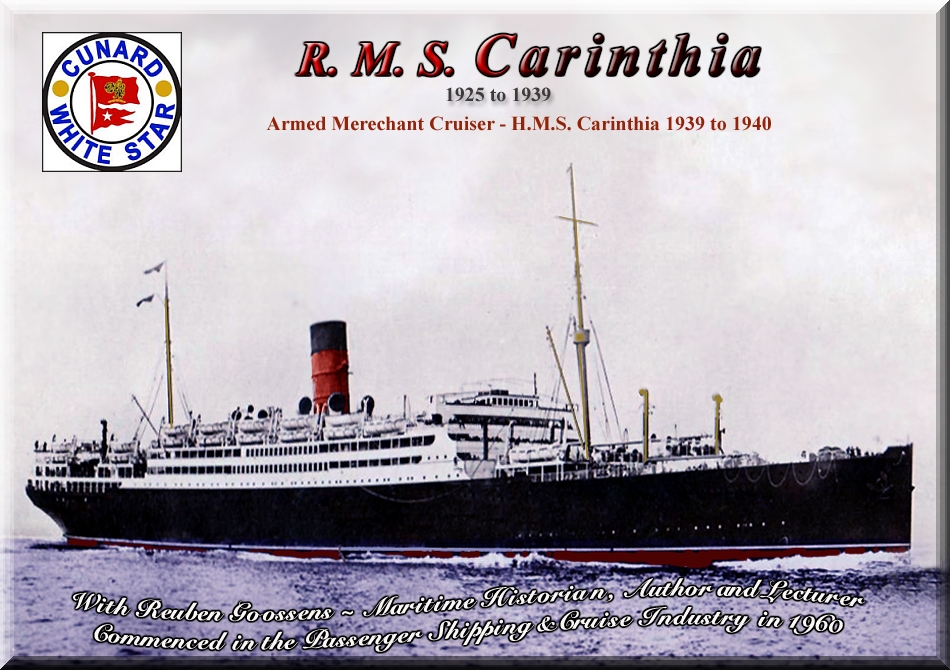
Black & white photograph was colourised & © by the author, Reuben Goossens
Please Note: photographs and postcards on this page are from the Author’s Private Maritime Collection, unless mentioned otherwise
Introduction:
The Turbine Steam Ship Carinthia was Cunard White Star Line’s second ship to use this name, although the first SS Carinthia was a 5,598 GRT (Gross Registered Tons) Cunard Line freighter, which was in service from 1895 to 1900. However, this superb name would be used for two further greatly loved Passengers Liners, the first of these being completed in 1925 and the second in 1956.
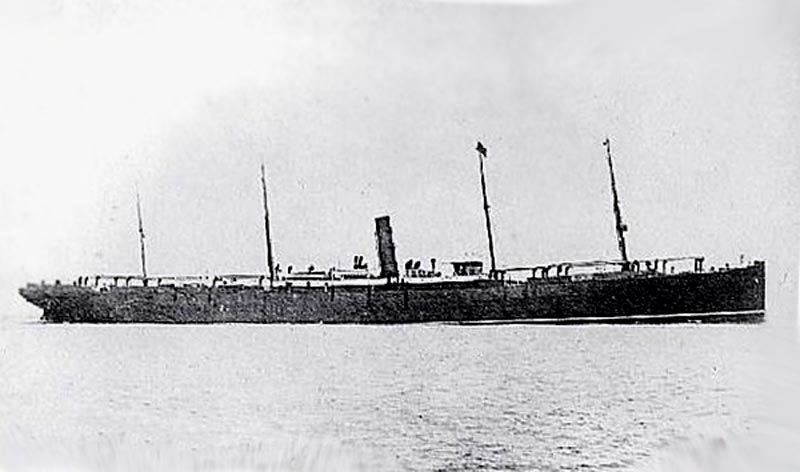
This is the humble 5,598 GRT SS Carinthia, was a four-mast cargo
steamer with a tall slender slanted black funnel
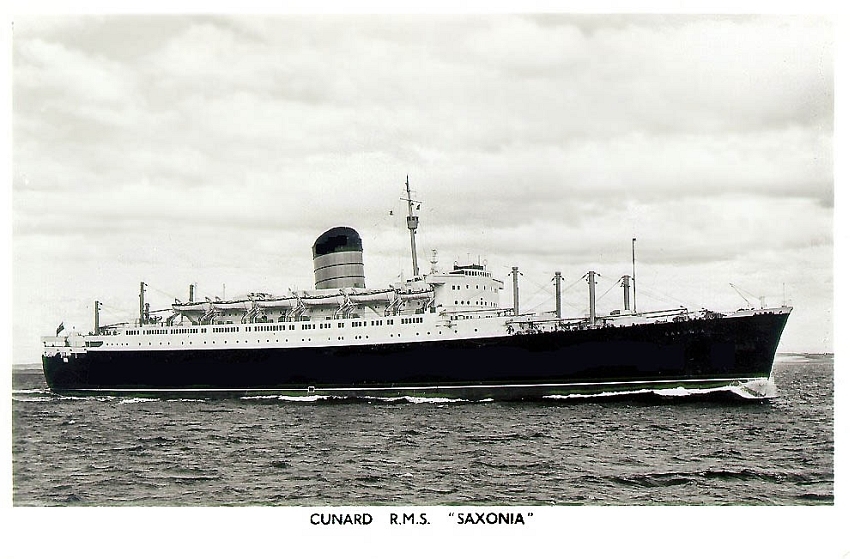
The RMS Saxonia of 1956 was sold to and rebuilt by Sitmar Lines to become the superb
TSS Fairsea in 1971 & TSS Fair Princess in 1988 and remained afloat until 2005
RMS Carinthia II:
RMS Carinthia II was built by Vickers
Armstrong & Co.,
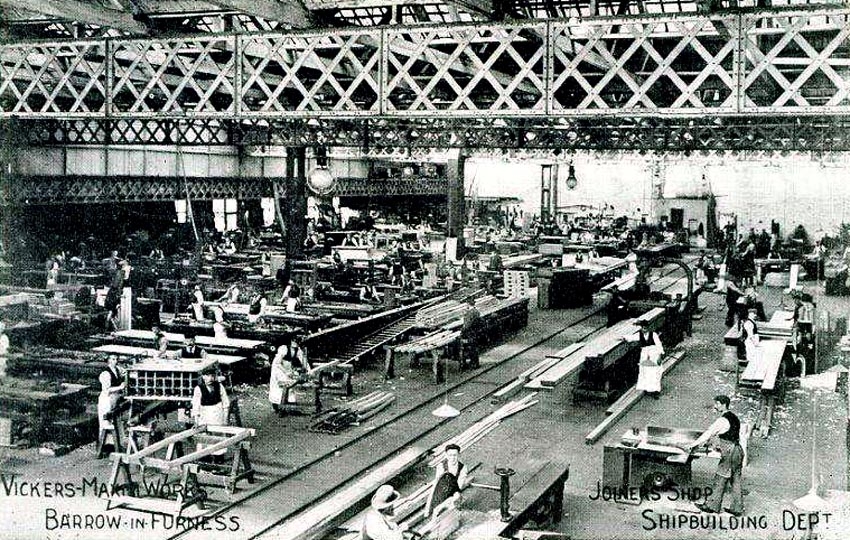
The shipyards joiners shop working on all her interior fittings
The ship was launched and officially named
“
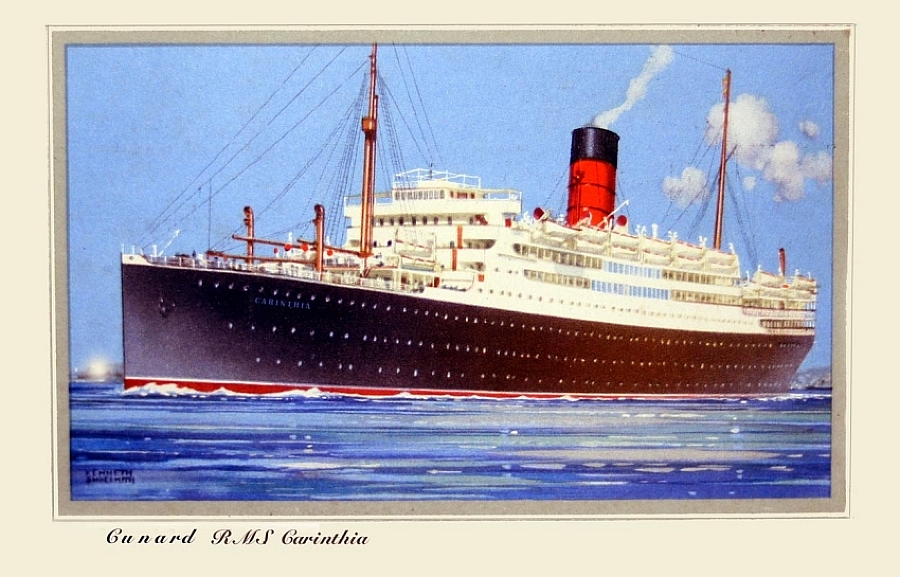
This postcard of the R.M.S. Carinthia II was released by Cunard-White-Star Line prior to her maiden voyage
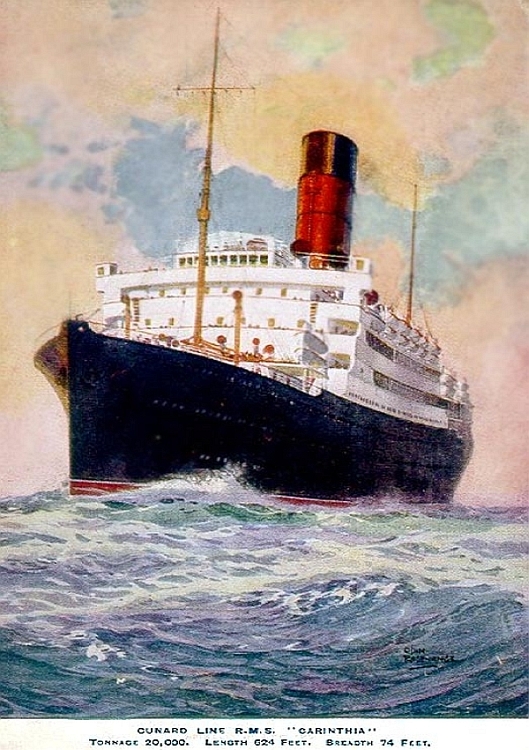
A postcard with an artist impression of the RMS Carinthia
Then early August 1925 having been completed
she headed out to sea for her speed trials, which she completed with success,
having achieved an excellent 17.5 knots. There after, she was delivered to her
owners in
Interiors and Facilities:
RMS Carinthia was noted for her
glamorous First Class public venues, such as the grand two stories high El
Greco Smoke Room on A Deck, which had been modelled after the house of
the famed Spanish painter ‘El Greco,’ this venue also
contained an American Bar. Her First Class lounge was furnished and decorated
to represent the period of King William of
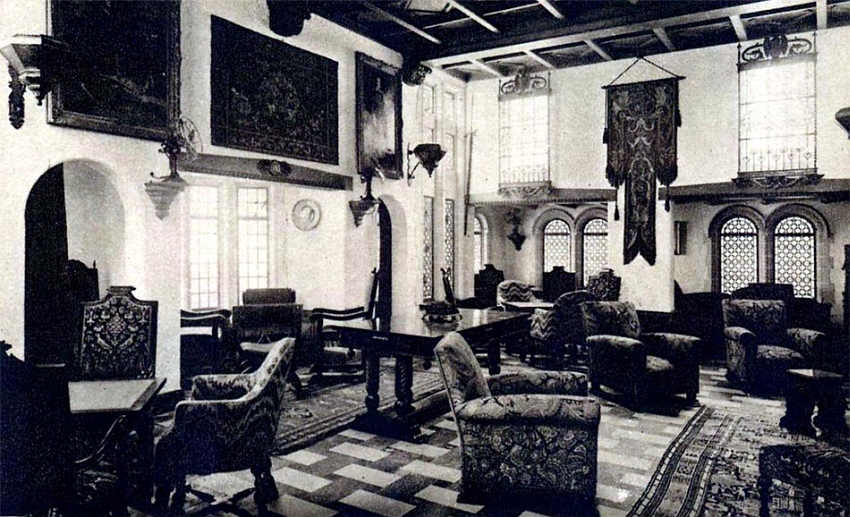
This is the El Greco Smoke Room
Her Second Class was certainly not far behind, as they had a beautifully designed Main Lounge with a grand piano and space for the band to play for nightly dancing. As was usual on all liners there was a decorative Smoking Room with a Bar as well as ample deck space and excellent accommodations.
She was also noted for her comfortable Third Class facilities and accommodations. The Dining Room offered ample smaller tables for travelling parties of family and friends; this was an innovation for those days, as usually there were only long tables for 20 to more passengers. Third Class also had a timbered Smoking Room, a small Library, and a Shop for passenger comfort and needs.
RMS Carinthia was also well equipped for sunning and swimming during the summer days, , and ample space for sports, with an arena that covered 5,000 square feet (460 m2) over two decks, and there was also a spacious Swimming Pool. In addition, the ship offered a Gymnasium; Racket Courts and Massage treatments were available.
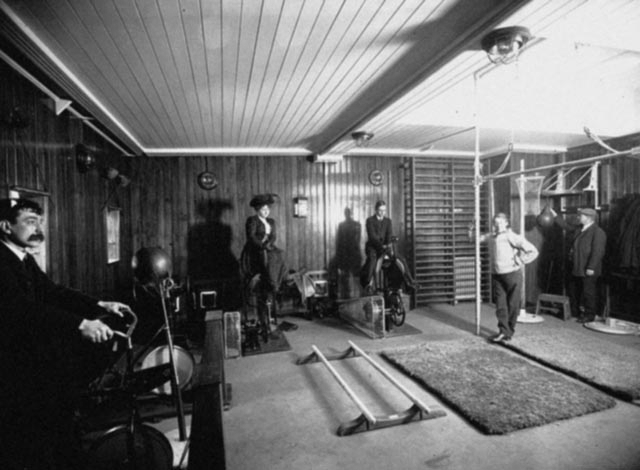
The ships Gym
The
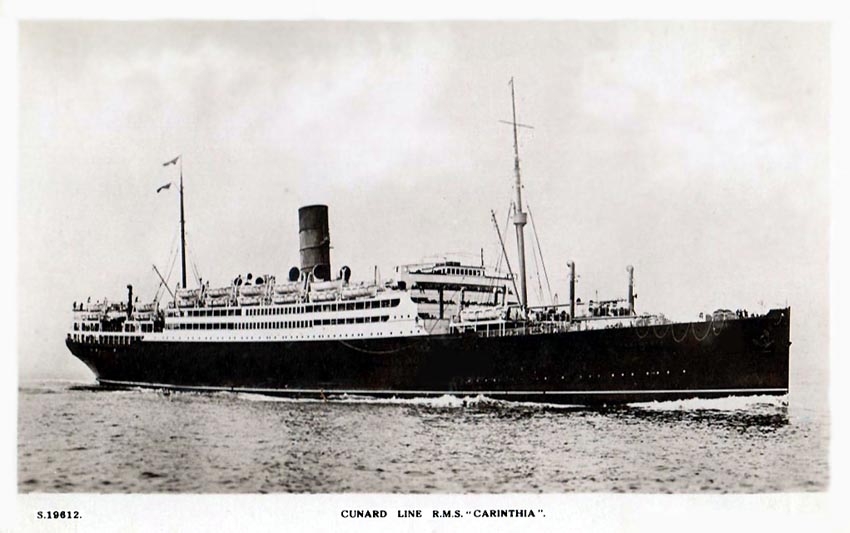
The best of all Cunard Line’s postcard of the RMS Carinthia
Liner Duties & Cruises:
When she was completed RMS Carinthia
departed on August 22, 1925 for her maiden Trans-Atlantic voyage from Liverpool
sailing via
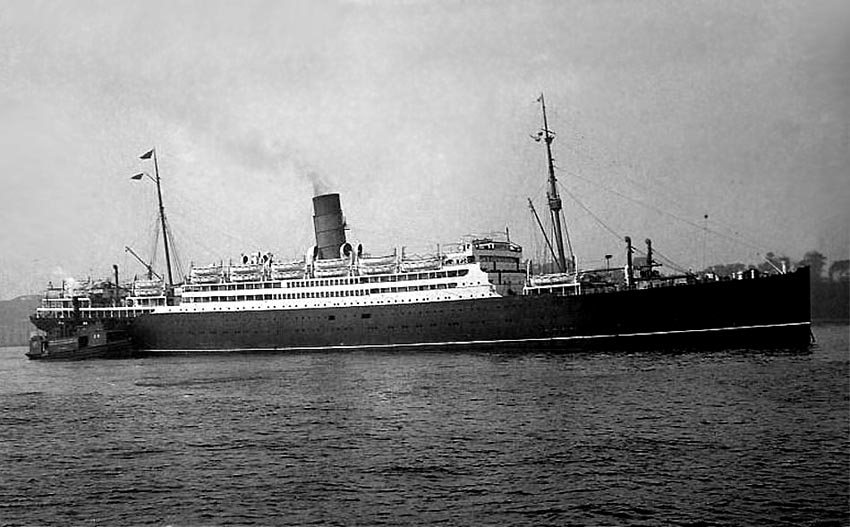
A fine photograph of the RMS Carinthia seen arriving in
Late in 1926 the
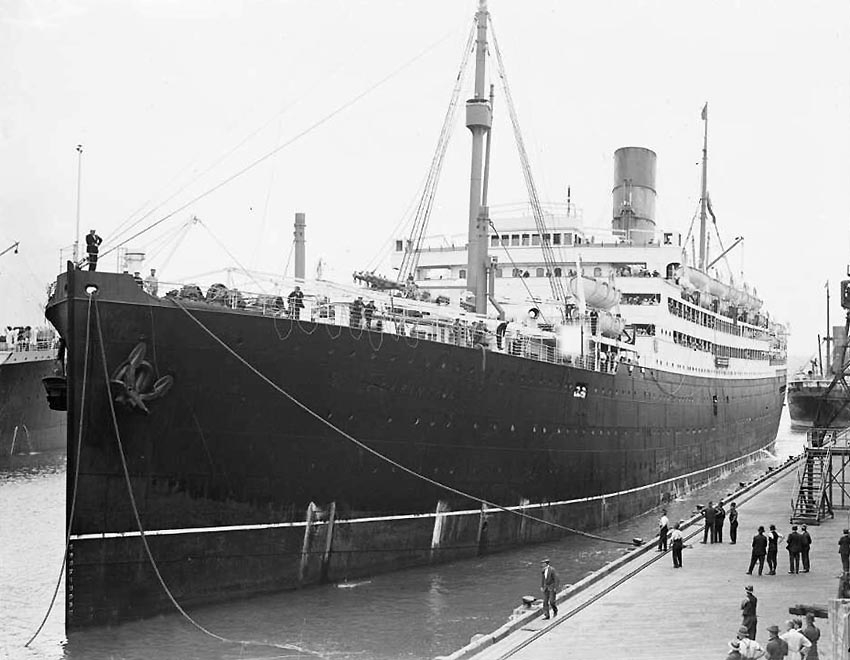
R.M.S. Carinthia is seen casting off from Fremantle (
Photograph
© National Library of
In 1931 Carinthia’s passenger accommodations were rearranged, which meant that First Class was renamed Cabin Class, Second Class became Tourist Class, and Third Class remained unaltered.
In 1933 the Carinthia made one of her by now famed around the world cruises and visiting countless ports in the States, Caribbean, the Panama Canal, Pacific Islands, Asia and then headed for Sydney Australia and other Australian ports, returning via Colombo and the Suez Canal, etc.
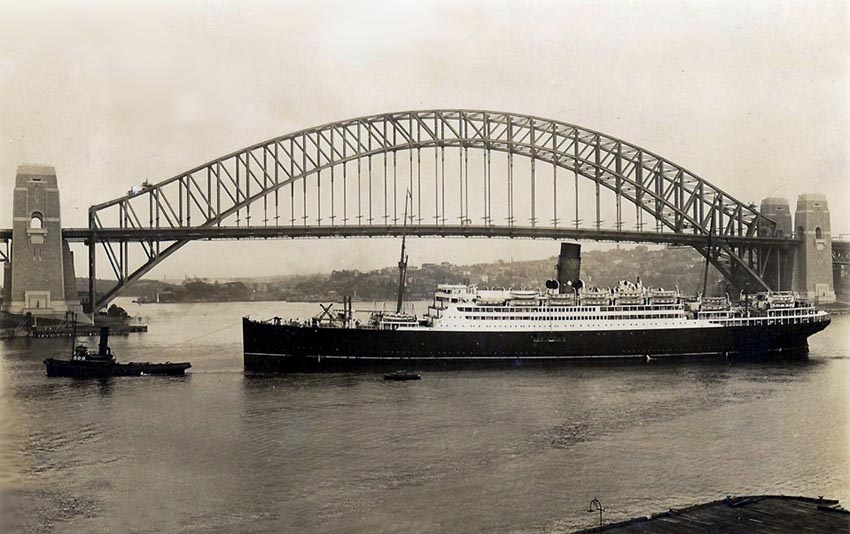
A fine photograph of RMS Carinthia arriving in
In September 1933
RMS Carinthia received an SOS from a Latvian cargo ship,
the 2,265 GRT SS Andromeda built in 1904, the news was that she had
struck an unknown submerged object, around eighty miles
from Ushant in the English Channel. But due to the
In 1934 the Carinthia was relocated to
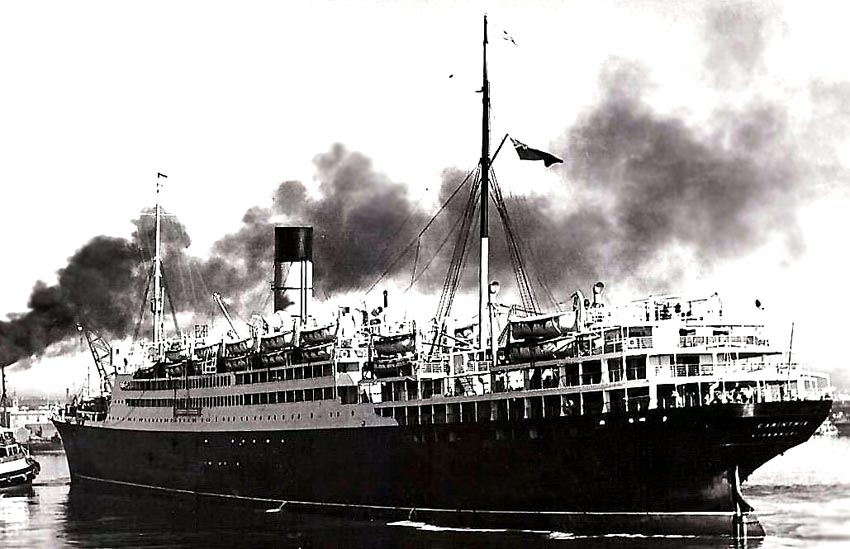
Here is a fine stern view of the RMS Carinthia
In 1935, just as a number of other Cunard
ships,
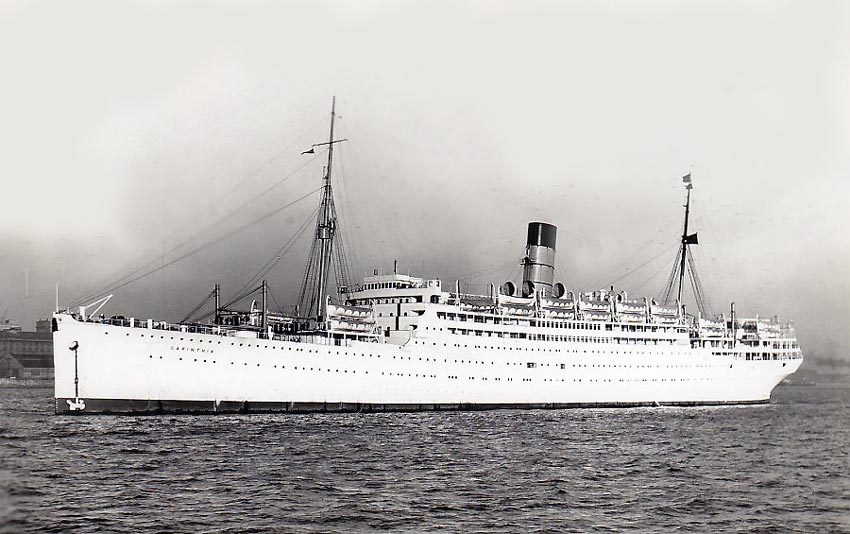
A photograph (above) and a postcard (below) of the all white RMS
Carinthia looking very much like a tropical style of cruise ship
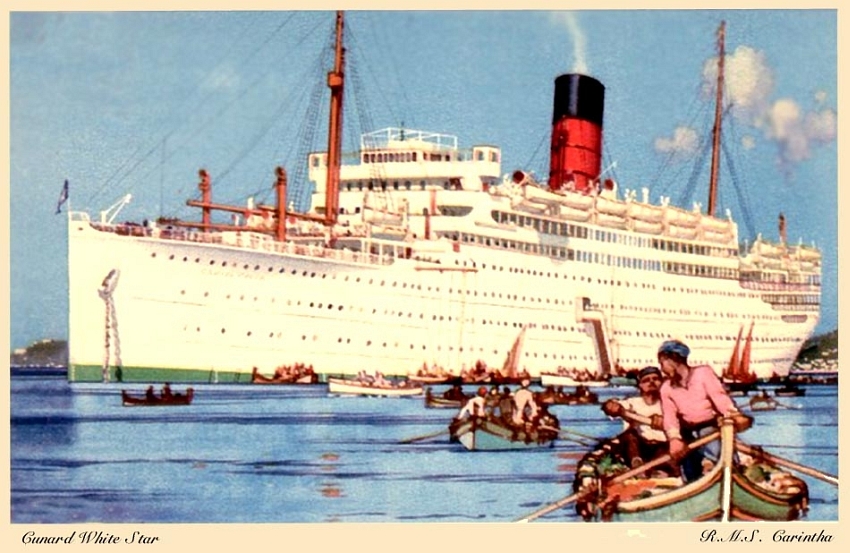
Then on September 20, 1938 during on a cruise,
from
World War II:
In August 1939 she was converted into
an armed merchant cruiser, retaining the name
For interest:
HMS Carinthia was armed with 8 x 152/45 Mk-VII (20) & 2 x 76/45
At 13.13 hours on June 6, 1940, with HMS Carinthia being on a northern patrol west of Galway Bay Ireland in coordinates 53°13'N 10°40'W, being under the command of Captain John Francis Benjamin Barrett RN, was struck aft of the ship by a single G7e torpedo, which had been fired by German U-Boat - U-46, which was under the command of captain Engelbert Endrass.
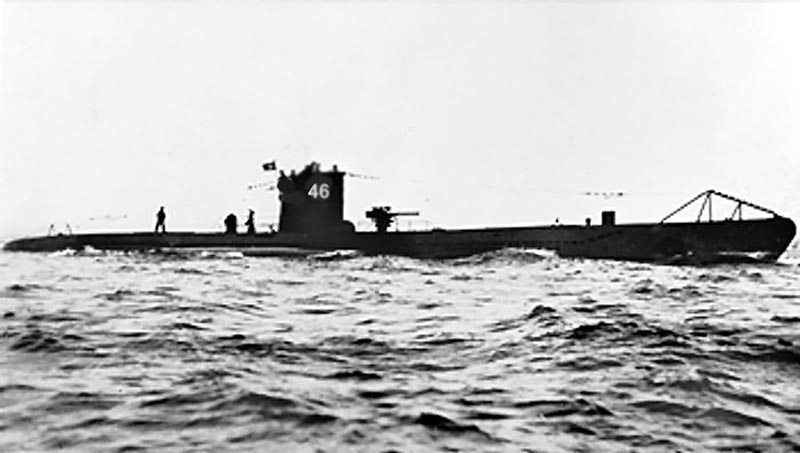
German submarine U-46 was a Type VIIB U-Boat for Nazi Germany's Kriegsmarine
She was commissioned on November 2, 1938, and was considered by the Nazi’s as
One of the most successful submarines, having sunk many ships
As the torpedo hit the ship there was a large explosion, which tragically instantly killed four men, being two crewmembers and two ratings; thankfully, later all other hands aboard would be saved.
The Germans remained to observe the ship, whilst she turned uncontrolled in circles, all the time dropping depth charges from her stern. Then at 13.47 hours, another G7e coup de grāce was fired from now afloat U-46, but it missed and this was answered by rapid gunfire from the Armed Merchant Cruiser. Thus the Germans decided not to waste any more torpedo’s and departed quickly, for they could clearly see the ship was burning fiercely, and she was already going slowly down by the stern, as well as developing a list to port.
However, in a salvage attempt, the RMS Carinthia was taken in tow the next day, and amazingly from the explosion on June 6, the badly damaged ship remained afloat for over 30 hours before she would finally sink.
Late on June 7, 1940,the crew abandoned ship
when it became obvious that she was about to go down, thus the once great
RMS/HMS Carinthia slowly vanished into the deep at position 55°12.010' N
009°30.040' W to a depth of 384ft - 117m, 30 miles east of Bloody Foreland.
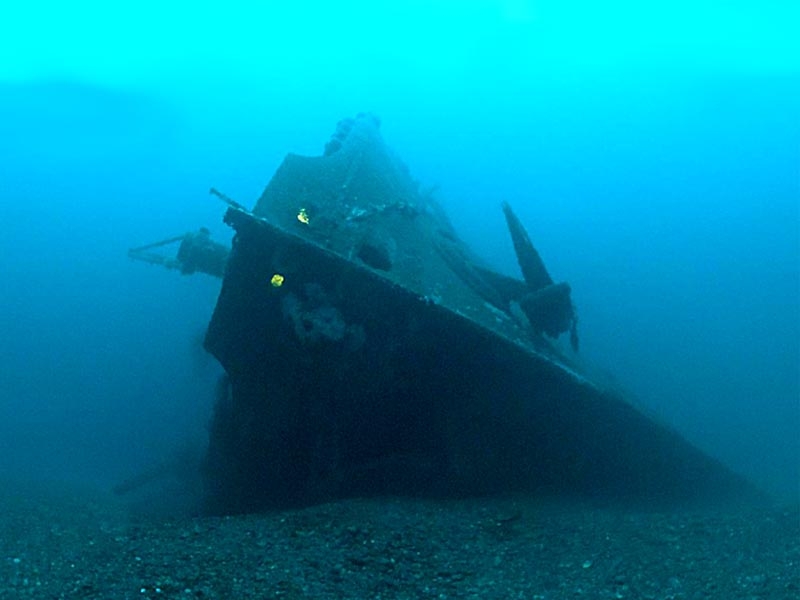
A tragic sight, the bow at the bottom of the Sea
Specifications
RMS/HMS
Built by:………………………………………………..Vickers
Armstrong & Co.,
Yard Number:………………………………….……586.
Owner:…………………………………………………..Cunard White Star Line,
Registered:…………………………………..….……
IMO:
…………………………………………………….147318
Launched:………………….……………
. …………February 24, 1925.
Tonnage:…………………………………….………. 20.277 GRT.
Length:………………………………………………….624ft - 190.2m.
Beam:……………………………………………………73.5ft - 22.4m.
Draught:……………………………………………….45ft - 14m.
Engines:…………………………………….………….Four Steam Turbines, S.R. Geared by builders - 2,437 NHP.
Propellers:……………………………………….……Two.
Speed:…………………………………………………..16.5 knots, 17.5 knots maximum.
Passengers:…………………………………………..1,650 - 240 in First Class, 460 in Second Class & 950 in Third Class.
Crew:…………………………………………………….450
officers and men
Armed Cruiser
Remembering a fine Liner & Cruise
Ship - RMS Carinthia II
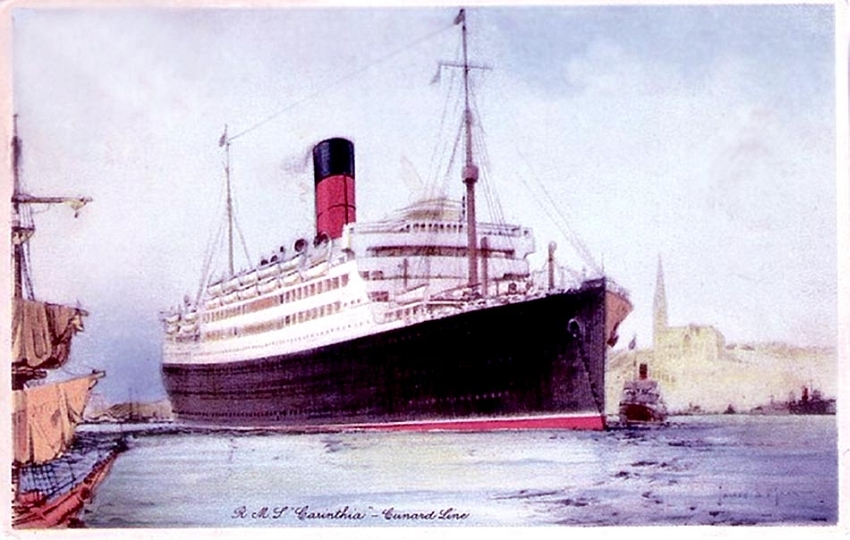
A Cunard White Star Line postcard with an excellent artist’s
impression of RMS Carinthia, which was sold onboard
Also read the RMS
Carinthia III Feature
I watched them come, I watched them go, and I watched them die.”
************************
ENTER OUR ssMaritime MAIN INDEX
This notice covers all pages, although, and I have done my best to ensure that all photographs
are duly credited and that this notice is displaced on each page, that is, when
a page is updated!
